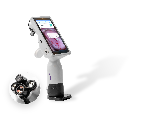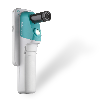By Even Schuman
Mobile apps for health care have broken new ground in monitoring, diagnosis, and treatment. Next week, some of the most advanced will be highlighted at the SXSW Accelerator competition.
These apps have the potential to advance health care, especially in parts of the world where quality care is distant. But they first have to overcome a huge obstacle. In addition to the funding challenges and routine tech hurdles that every startup must clear, healthcare apps have to wrestle with 19-year-old federal HIPAA guidelines, which often frustrate developers, who see the rules as impractical in the mobile world of 2015.
…
Consider MobileODT, which makes a device that leverages a phone’s capabilities to make cervical cancer diagnosis easier and much less expensive. Its device, according to CEO Ariel Beery, “transforms the phone into a long-range microscope” by physically attaching a specialized lens with a light-source and a battery pack.
“We’re adding an additional lens to (the phone’s) lens, making it a mix of a telescope and a microscope. The physician can then see a distance of 30 centimeters away at a magnification of between 10 and 25 times.”
The $1,800 device replaces the standard hospital-based mechanism, which costs more than 10 times as much, Beery said. But in many of the areas MobileODT focuses on, the mobile apparatus wouldn’t replace that large hospital equipment — because in those areas, there is no equipment. Instead, health workers make diagnoses with a flashlight and the naked eye.
Such diagnoses “are more often than not wrong,” resulting in a high rate of miscarriages and infections, Beery said. “They are treating five out of six women unnecessarily.”
Read full article here







